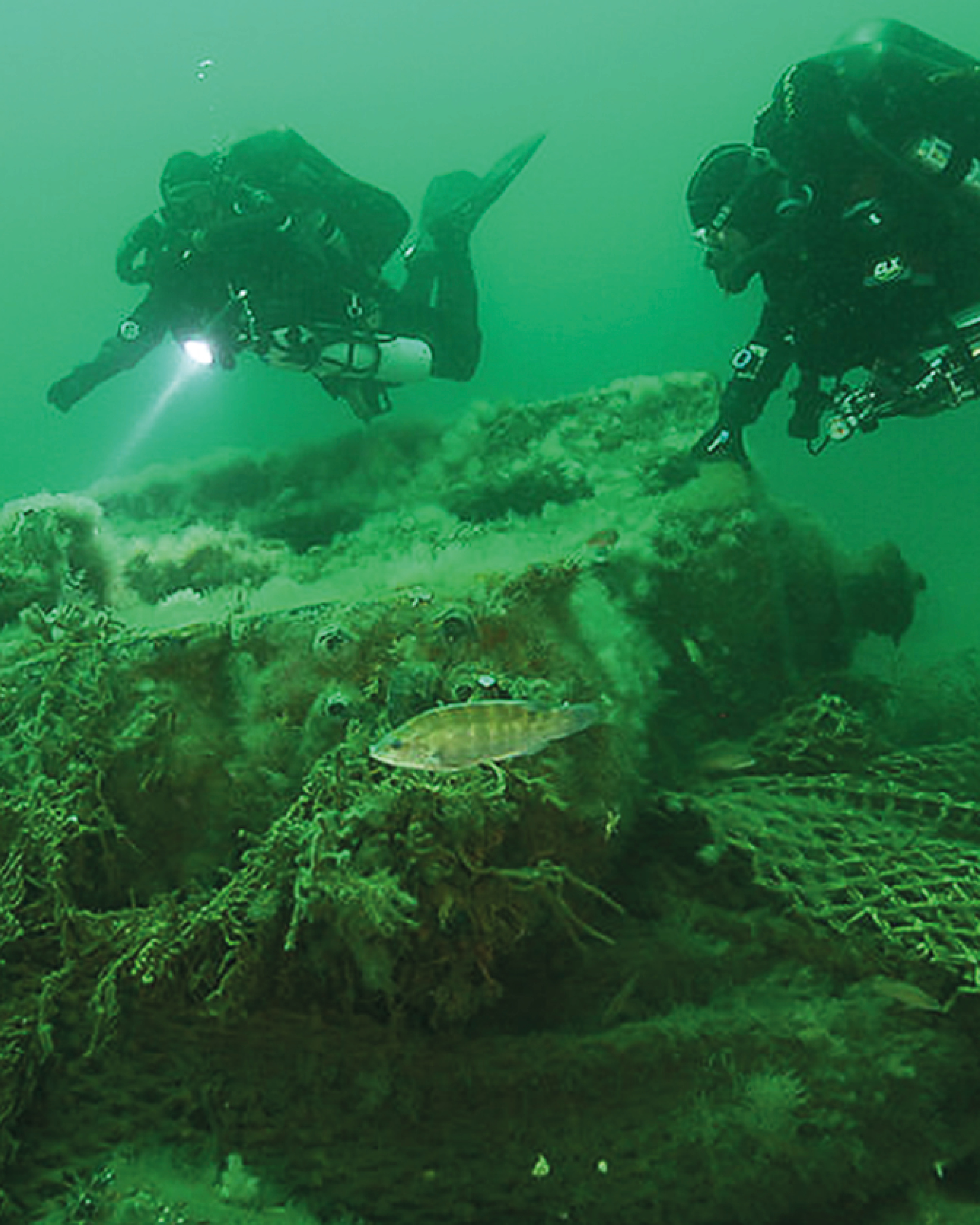DOI:
https://doi.org/10.58981/bluepapers.2023.1.08Downloads
Published
Issue
Section
License
Copyright (c) 2023 Charlotte Jarvis, Maria Pena Ermida, Ole Varmer

This work is licensed under a Creative Commons Attribution 4.0 International License.
How to Cite
Abstract
Our ocean heritage (natural and cultural) is at risk from destructive human activities, including bottom trawling, deep seabed mining (DSM), and potentially polluting wrecks (PPWs). The stories of our societies and our ancestors are often connected with the ocean and captured on the seafloor as artifacts, shipwrecks and the remains of those lost or buried at sea. Previously, marine global heritage protection efforts have been largely focused on natural heritage. However, Underwater Cultural Heritage (UCH) is also ocean heritage and must be considered the same way. We must shine a light on UCH as heritage and insist that it be part of Marine Spatial Planning with integrated ocean and coastal management. Approaches include, but are not limited to, (1) Conducting baseline surveys to identify heritage that should be conserved and preserved for present and future generations; (2) Environmental assessments taking into account the impact of human activities on both natural and cultural heritage; (3) Measures to identify, avoid or minimize the adverse impacts; and (4) The application of a precautionary approach to trawling, DSM and salvage of PPWs, calling for a moratorium on these activities unless and until steps 1 – 3 have been accomplished, permits/other management controls are in place and significant natural and cultural sites have been designated as protected areas.
References
Brennan, Michael L., Dan Davis, Robert D. Ballard, Arthur C. Trembanis, J. Ian Vaughn, Jason S. Krumholz, James P. Delgado et al. 2015. “Quantification of Bottom Trawl Fishing Damage to Ancient Shipwreck Sites.” Marine Geology 371, no. 2: 82–8. https://doi.org/10.1016/j.margeo.2015.11.001.
Brennan, Michael L. 2016. “Quantifying Impacts of Trawling to Shipwrecks.” In Site Formation Processes of Submerged Shipwrecks, edited by Matthew E. Keith, 157–79. Gainesville: University Press of Florida.
Carter, Matthew. 2021. “Forgotten Threats: Potentially Polluting Wrecks in the Blue Pacific.” Chapter 5 in issue on Marine Pollution. Environment, Coastal and Offshore (ECO) Magazine. http://digital.ecomagazine.com/publication/?i=724539&article_id=4133528&view=articleBrowser.
International Seabed Authority. 2019. “Draft Regulations on Exploitation of Mineral Resources in the Area.” Twenty-fifth session Council, part II Kingston, Agenda item 11. https://www.isa.org.jm/wp-content/uploads/2022/06/25c-11-e.pdf.
National Atmospheric and Oceanic Administration. 2012. 2012 Risk Assessment for Potentially Polluting Wrecks in US Waters. https://sanctuaries.noaa.gov/protect/ppw/pdfs/2013_potentiallypollutingwrecks.pdf.
Papahānaumokuākea Marine National Monument. 2020. “Papahānaumokuākea Marine National Monument is the only mixed UNESCO World Heritage Site in the U.S.” 30 July 2020. https://www.papahanaumokuakea.gov/wh/2020/.
Roberts, Callum. 2007. The Unnatural History of the Sea. Washington, DC: Island Press.
The Ocean Foundation (TOF). n.d. “Seabed Mining.” Accessed 7 March 2023. https://oceanfdn.org/seabed-mining/.
Tilot, Virginie, Klaas Willaert, Bleuenn Guilloux, Wenting Chen, Clement Y. Mulalap, François Gaulme, Tamatoa Bambridge et al. 2021. “Traditional Dimensions of Seabed Resource Management in the Context of Deep Sea Mining in the Pacific: Learning From the Socio-Ecological Interconnectivity Between Island Communities and the Ocean Realm.” Frontiers in Marine Science 8 (April): 637938. https://doi.org/10.3389/fmars.2021.637938.
Turner, Phillip, Sophie Cannon, Sarah DeLand, James Delgado, David Eltis, Patrick Halpin, Michael Kanu, et al. 2020. “Memorializing the Middle Passage on the Atlantic Seabed in Areas Beyond National Jurisdiction.” Marine Policy 122. https://doi.org/10.1016/j.marpol.2020.104254 .
UNESCO. 2002. “Convention on the Protection of the Underwater Cultural Heritage.” Records of the General Conference(in italics) 1:50–61. Paris: UNESCO. https://unesdoc.unesco.org/ark:/48223/pf0000124687.page=56.
UNESCO. 2020. “World Heritage in the High Seas.” https://whc.unesco.org/en/highseas.
United Nations. 1982. “United Nations Convention on the Law of the Sea.” UN Treaty Series (italics), chapter XXI, 1833 U.N.T.S. 397.




